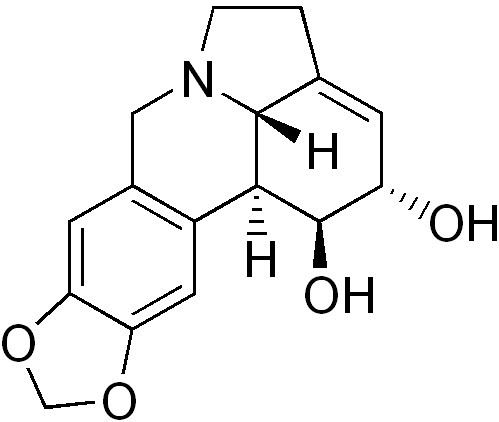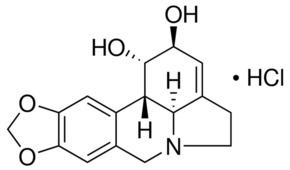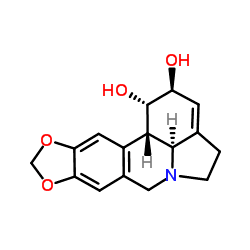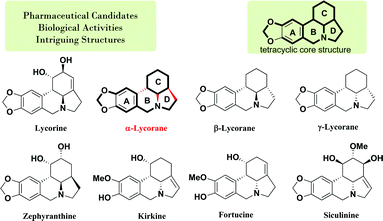Formula C16H17NO4 | ||
 | ||
Lycorine is a toxic crystalline alkaloid found in various Amaryllidaceae species, such as the cultivated bush lily (Clivia miniata), surprise lilies (Lycoris), and daffodils (Narcissus). It may be highly poisonous, or even lethal, when ingested in certain quantities. Symptoms of lycorine toxicity are vomiting, diarrhea, and convulsions. Regardless, it is sometimes used medicinally, a reason why some groups may harvest the very popular Clivia miniata.

It inhibits protein synthesis, and may inhibit ascorbic acid biosynthesis, although studies on the latter are controversial and inconclusive. Presently, it serves some interest in the study of certain yeasts, the principal organism on which lycorine is tested.

Daffodil bulbs are sometimes confused with onions, leading to accidental poisoning.




